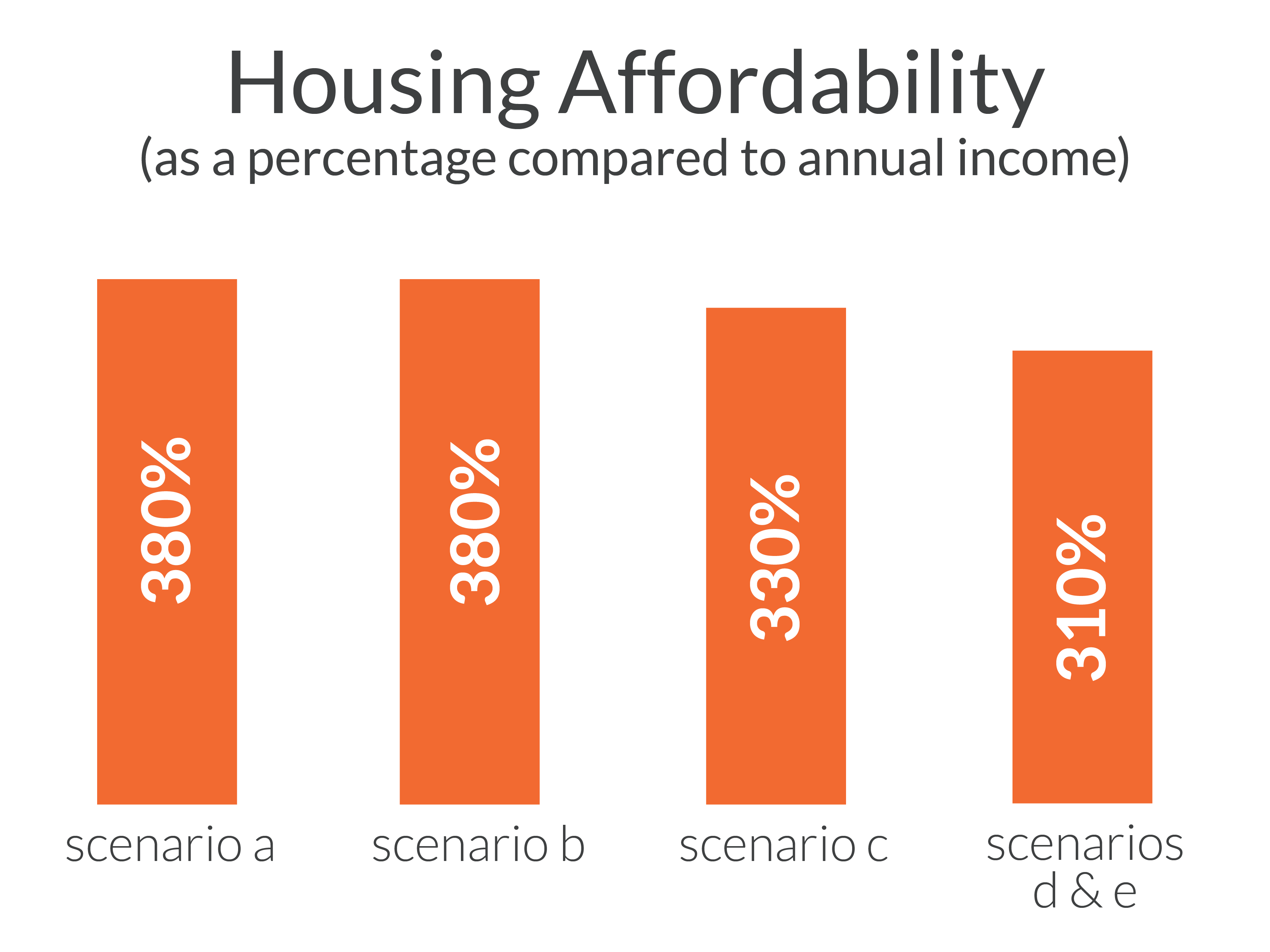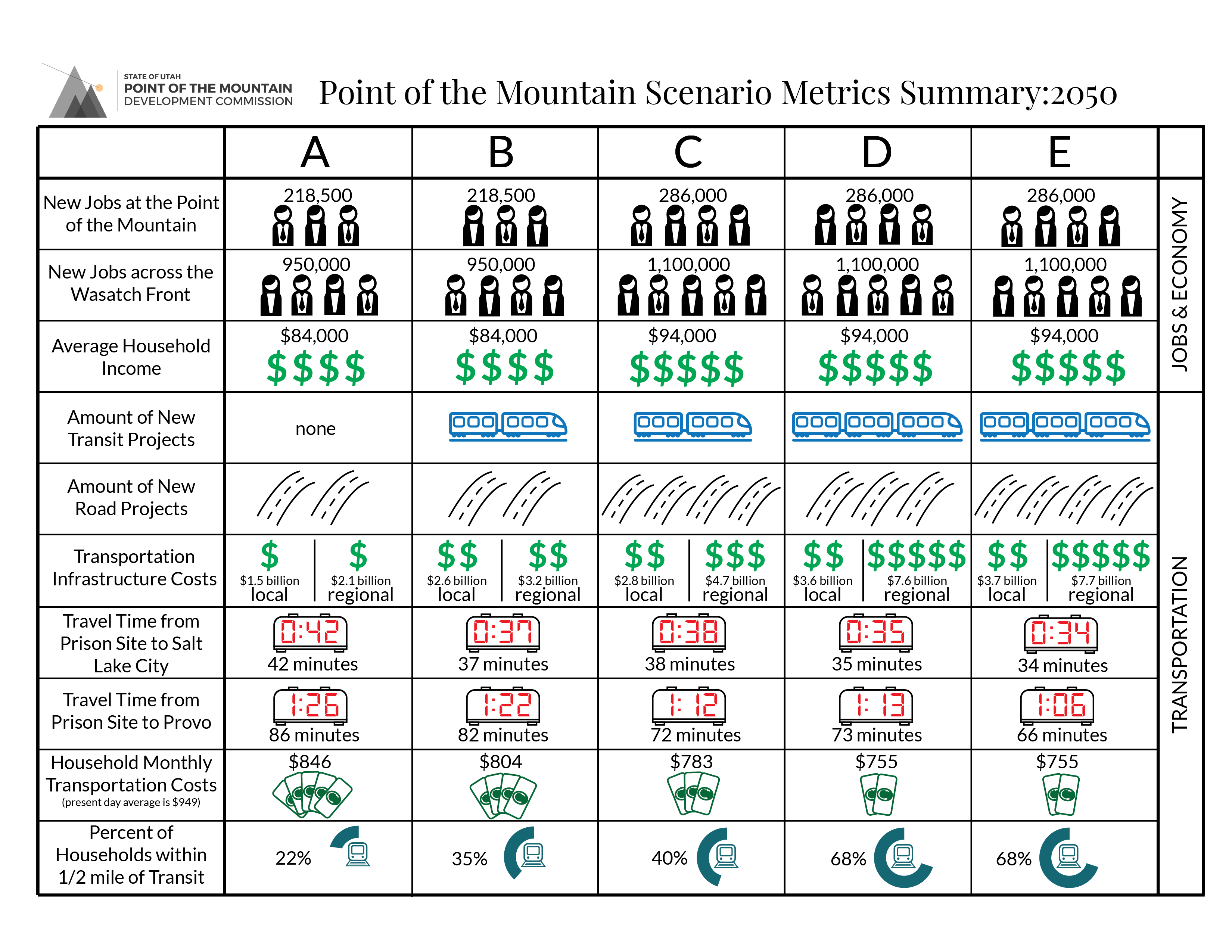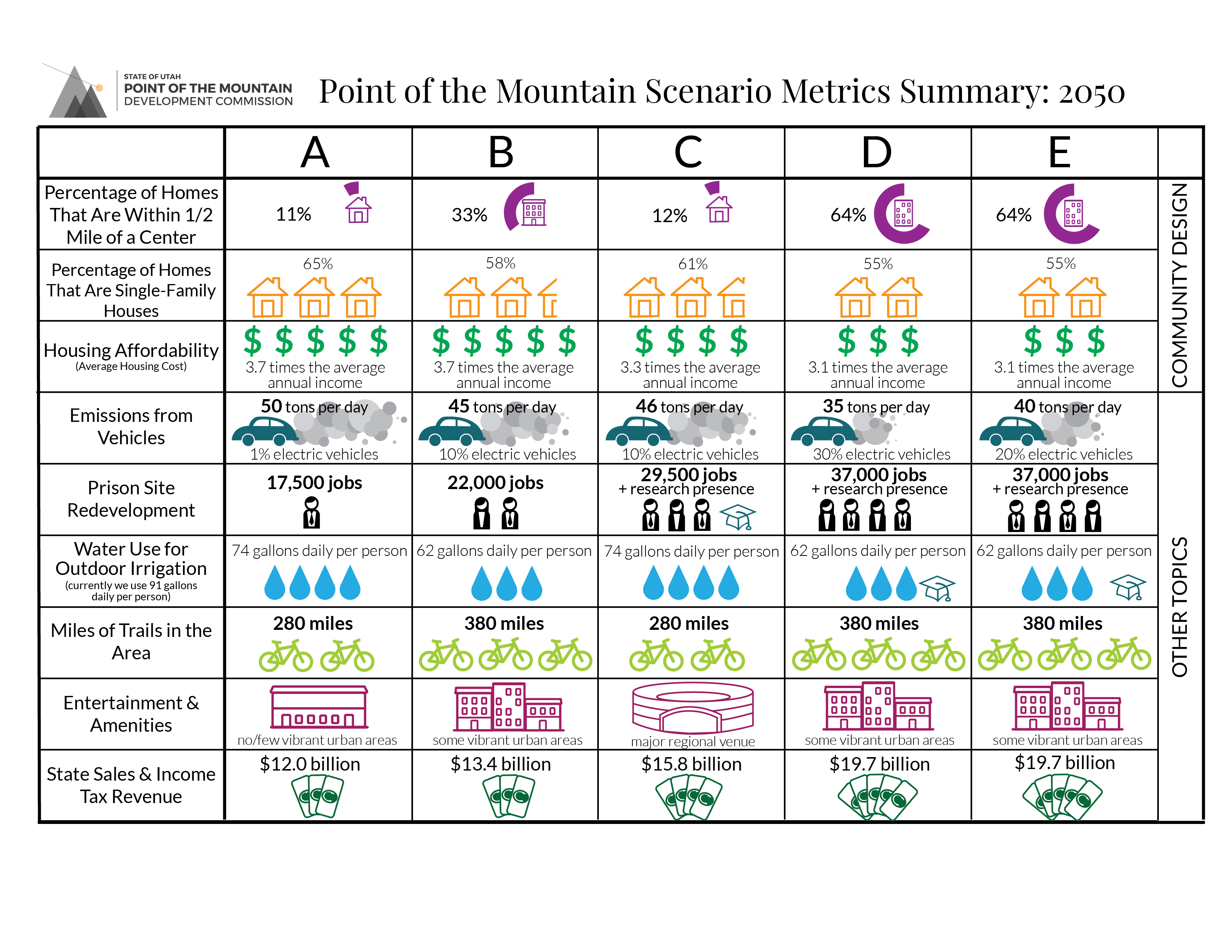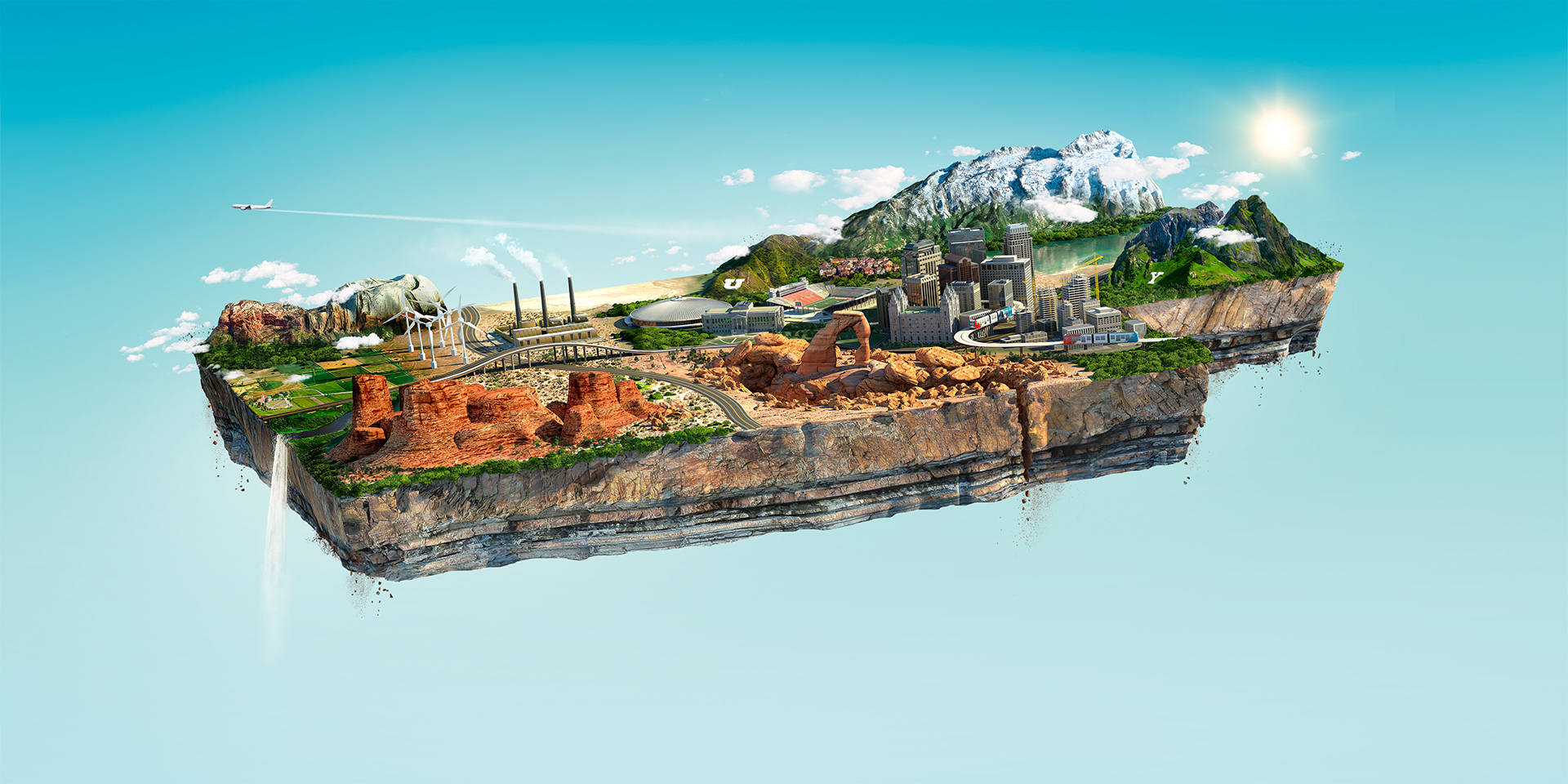The Story
Catalyzed growth in high-paying jobs results in additional growth. Development becomes more compact and includes vibrant urban centers that include housing, jobs, shopping, and other amenities. About 33% of new housing built in the Point of the Mountain area is single-family homes, which when added to current housing leads to a total of 55% single-family homes. Additional jobs and growth also locate in other places along the Wasatch Front.
Commercial areas and job cores are designed to be more accessible by foot or bicycle than in other scenarios. Parking lots are designed to transition to other uses when future market demand dictates (e.g., because of shared and autonomous vehicles).
CLICK HERE TO WATCH A SHORT FLY-OVER VIDEO COMPARING THE SCENARIOS


Results
- 33% of new homes at the Point of the Mountain are single-family detached, 25% are townhomes/duplexes, and 42% are apartments/condos.
- 55% of total homes at the Point of the Mountain are single-family detached, 45% are townhomes, apartments, or condos.
- Although housing costs increase, housing is much more affordable than today because of increased incomes (an average new home costs $337,000, about 3.1 times the average income). It is easier to find a place close to work than in Scenarios A and C—although it might be a smaller home like a townhome, apartment, or small-lot single-family house.
- 64% of households are within 1/2 mile of a center with daily services.
- 2,600 acres of additional development happens in places like Eagle Mountain because it isn’t accommodated at the Point of the Mountain.







